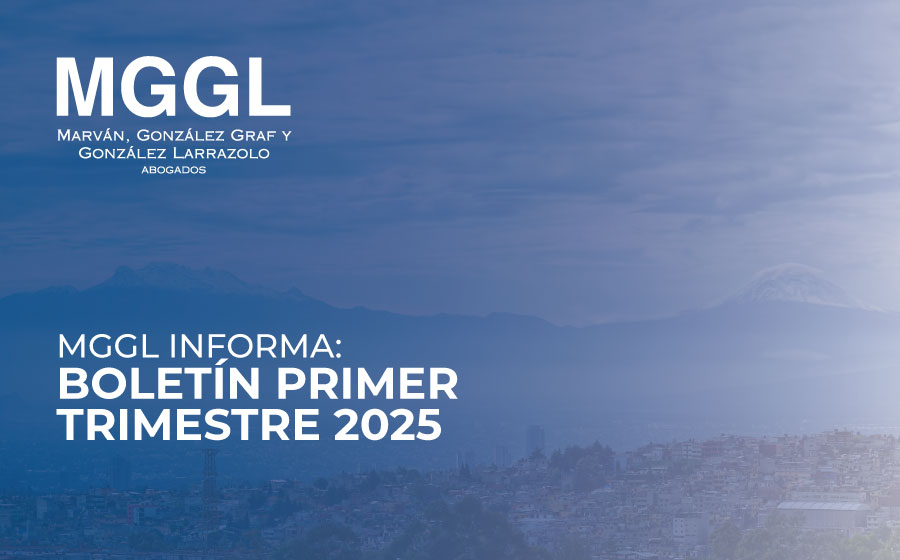In April 2019 we published a newsletter entitled "Structural effects of the constitutional reform and employment perspectives 2018-2024". In this issue, after following up on the extraordinary conditions caused by the COVID-19 pandemic, we return to the structural labor issues that will surely define a new model for labor and employment matters.
NAFTA and now the USMCA (“TMEC” in Spanish) are international treaties with specific commercial objectives, without any further intention of integrating the countries beyond those. As a result, migration, environmental and labor issues were initially relegated or marginalized within the scope of the treaty. NAFTA and its parallel labor agreement NAALC (North American Agreement on Labor Cooperation) were governed on the following basis: (i) that each country would have an obligation to comply with and enforce its legal framework, (ii) that this legal framework should uphold the eleven core labor principles recognized and protected by the three countries, and (iii) that the means of dispute settlement allowed for, on the basis of the subject matter, the possibility of reaching an arbitration panel and the loss of rights under the treaty.
Thus, only issues of minimum wage, protection of minors, prevention of occupational risks and diseases could reach this last instance, so that the violation of the remaining eight rights could only obtain an assessment by appointed experts. More than thirty violations were denounced before the Labor Cooperation Commission in the first ten years of its existence, without finding that the claims had consequences for the signatory countries.
One of the lessons of globalization is that labor costs are one of the greatest factors of international competitiveness. For this reason, the USMCA reinforces the protection of labor rights and expressly includes the 1998 ILO Declaration on Fundamental Principles and Rights at Work and grants equal protection to all the labor rights protected by the treaty. Chapter 23 of the USMCA provides for specific substantive rights, mechanisms for cooperation, review, dialogue and consultation in the event of a dispute. Although each country retains full responsibility for compliance with its own laws, the cooperative scope between countries includes issues such as "systems of remuneration and mechanisms for the enforcement of labor laws…” and “the institutional capacity of the administrative and judicial labor authorities”, which proves a greater scope of supervision between the parties.
In addition, during the negotiation of the Treaty, the United States imposed Annex 23-A on Mexico, which obliges our country to :
- I) Establish in its labor laws, the right of workers to participate in concerted activities and collective bargaining and to organize, form and join a union;
- II) Prohibit employer dominance or interference in union activities, discrimination or coercion against workers;
- III) Establish and maintain independent and impartial bodies to register union elections and to resolve disputes related to collective bargaining agreements and unions;
- IV) Establishing: (i) an independent entity for the conciliation and registration of trade unions and collective bargaining agreements, and (ii) independent Labor Courts for the resolution of labor disputes;
- V) Provide for an effective system to verify that elections of union leaders are conducted through a personal, free and secret vote; and
- VI) Adopting legislation that required: (i) verification that collective contracts are supported by workers; (ii) majority support for the registration of an initial collective bargaining agreement, through the exercise of personal, free, and secret voting; (iii) existing collective contracts be reviewed at least once during the four years following the entry into force of the legislation verifying that workers are aware of the contract and support the review; and (iv) contracts be publicly accessible.
The obligations contained in the referred Annex are proof of a sensitive change in the perception of labor within the Treaty. The commitments of a collective nature, relating to unionization, union democracy and collective bargaining, as well as the administration of justice through the judiciary, are substantial and may represent risks to the status quo. From our point of view, there are several sensitive factors that should be addressed because, surely, they will be the subject of immediate appeals, namely:
- (I) The experience of the NAALC during the first years of its existence;
- (II) The number of collective management contracts with no union activity or representation;
- (III) The lack of appetite for unionization and adherence to collective activities on the part of the worker base;
- (IV) The criticism and discredit of our wage practices;
- (V) The participatory spirit of North American labor organizations, and the formation of regional or international labor alliances, particularly in the automotive, metallurgical and mining sectors;
- (VI) The new dispute resolution procedure, which allows, through preliminary cooperative dialogues, consultations, ministerial consultations, and in accordance with the dispute resolution procedure of the Treaty, through the reports (resolutions) adopted by panels made up of experts from the three countries, to resolve whether or not certain labor practices are compatible with the standards of the USMCA; and
- (VII) The greater scope of the dispute settlement procedure of the USMCA, which allows for the suspension of tariff benefits for a country if it fails to address the incompatibilities determined by the panel, representing a terrific opportunity for exerting pressure.
In accordance with the above, Mexican companies will have to implement strategic decisions in a very short term. In the area of collective relations, it will be necessary to evaluate, in accordance with the national legal framework and the USMCA, the convenience of legitimizing, through consultation and majority approval of the workers, the collective bargaining agreements, or not.Even though the legal term provided by the reform of 1 May 2019 is four years, it is foreseeable that in high-profile industries and companies with intensive interaction and potential regional competition, the level of scrutiny will be much higher. At MGGL we are ready.




